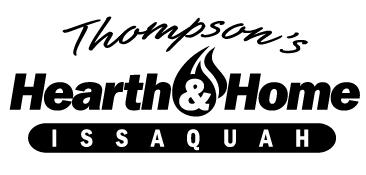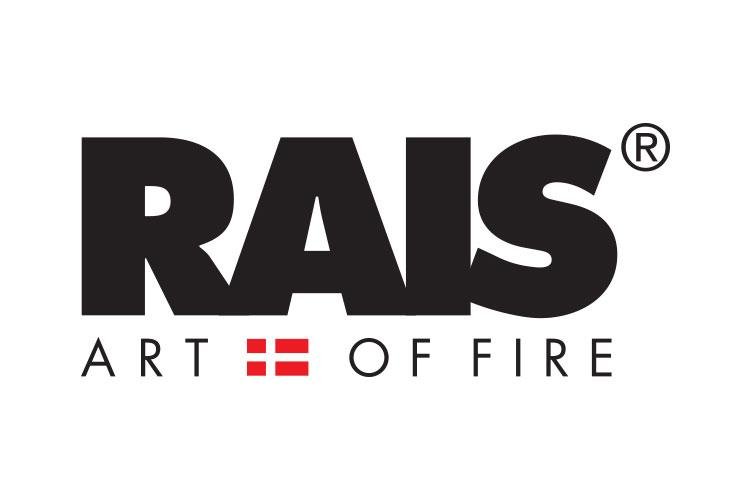Freestanding Wood Stoves
Freestanding wood stoves add a distinctive focal point to any room in your house as well as being a cost-effective source of heat. Our fireplaces are not just EPA certified but are WA State EPA phase II certified. We carry some of the cleanest burning high efficient non-catalytic wood stoves in the world. Our wood stoves not only offer an environmentally friendly way to heat your home from day to day but can also be used as your primary source of heat even in the event of a power outage.
We carry wood stoves made by Iron Strike (formerly Country Stoves) Morso, Rais and Jotul to heat areas from as little as 500 square feet on up to 3000 square feet. Almost all of our models offer ash drawers and all of the stoves we carry come standard with Ceramic Glass for durability and maximum heat transfer.
Wood has quite a special property when talking about CO2. As the tree grows, it absorbs and locks in enormous amounts of carbon dioxide as part of the photosynthesis process. Precisely the same amount of CO2 is released into the atmosphere, when the tree is felled and burnt. If burning-off takes place efficiently, the count adjusts downwardly, so we can say that wood is CO2-neutral and therefore a green energy source.
Not only that, wood - unlike e.g. oil, coal or gas - can be reproduced by planting new trees to replace those cut down. The neutral CO2-cycle can therefore be maintained. Generation after generation.
2020 EPA Woodstove Regulation
The USA Environmental Protection Agency has implemented a maximum 2.0 grams of particulate per hour regulation effective May 15, 2020 - this means that any product sold after May 15, 2020 at the retail level must conform to this standard. Because of this new standard the manufactures are in the process of producing wood stoves to meet the new emissions which is resulting in a shortage of wood stove choices.
Product purchased before or in use at the time of implementation of this regulation will not be affected.
Catalytic vs Non Catalytic
The 1970’s energy crisis caused a surge in the use of wood stoves and Inserts. In 1990 the United States environmental protection agency (EPA) implemented strict new emission standards for wood burning appliances, measured in grams of particulate per hour. (g/hr). The new standard of 7.5 g/hr nationally, 4.5g/hr for Washington State created the environment for the pioneers of the modern wood stove. Wood stoves and Inserts prior to the new standard could create up to 100 g/hr.
Catalytic combustors were a quick way to reduce emissions and pass the standard but proved complicated for a consumer to operate due to manual bypasses for start-up and reload; as well, catalytics proved to be very fragile, degraded over time and are expensive to replace. Many major manufacturers moved away from the unreliable catalytic combustors to re-burn systems.
Currently the EPA has introduced and implemented a new emissions standard of 2g/hr taking effect on May 16, 2020. Several manufactures unfortunately are relying on catalytic technology and/or fixed burn rates to get them over the 2 g/hr hurdle.
Excerpts from the:
Residential Wood Combustion Technology Review Volume 1. Technical Report
Dec 1998, prepared by Omni environmental, for the Environmental Protection Agency
“The two most common degradation effects seen in catalytic stoves are damage to the catalyst bypass and the deterioration of the catalyst itself either through physical breaking, pealing or plugging or through the loss of catalytic activity. Under normal use the emissions of particles from most catalytic wood stoves will increase, in some cases reaching conventional stove levels within five years of use due to the loss of catalytic activity”
“...under extended high temperature use a catalyst could fail very rapidly. Once a catalyst fails, the emissions for some models would be close to those from a conventional uncertified stove...” This means the emissions could reach up to 100 grams per hour.
Q: What is a catalytic combustor?
A: A Catalytic combustor is a honey combed device located near the flue outlet containing chemicals and materials that will assist in burning smoke particulate when a high enough internal temperature has been reached.
Q: Do they burn cleaner than non catalytic stoves?
A: Yes, and No. Catalytic combustors assist significantly in the relatively short start-up phase when you first light the stove. They also can achieve very good results on extremely low settings. However, if you operate your stove as most people do in the mid burn cycle the results are less dramatic. If they are not operated properly and over time they can be significantly less clean than a non catalytic modern woodstove.Q: How does a catalytic stove operate compared to a non catalytic stove.
A: Virtually all catalytic stoves will require operator knowledge and manual control of a bypass damper during the start- up phase, this prevents the plugging of the device with smoke and particles before operational temperature has been achieved.Q: Does a catalytic stove require more maintenance?
A: Maintenance can be more difficult as the catalytic combustor typically needs to be removed when cleaning and they can be very fragile. Also, outside colder chimneys can require frequent cleaning due to the cooler stack temperatures, many experienced retailers avoid outside chimneys with catalytic stoves.Q: Is there restrictions on what fuel I can burn?
A: Most typical cord woods are fine, but catalytic combustors can be highly susceptible to damage from burning foreign materials such as glossy colored papers and other chemical laden materials, these can render the catalytic inoperable.Q: How long will a catalytic last.
A: Catalytic combustors are subject to damage from physical contact, thermal shock, plugging up from not properly using the bypass or unseasoned fuel and degradation of the actual combustor chemicals over time. The actual useful life span is highly variable on these factors.Q: How do I know if my catalytic stops working?
A: In some cases, when the catalytic plugs up the stove will not burn in other cases such as in chemical failure of the combustor or physical breakage you may not be able to tell.Q: If catalytic combustors are unreliable and fragile why do many manufacturers use them?
A: Catalytic combustors are useful in larger fireboxes that tend to burn dirtier than medium and small fireboxes, they are also a very economical way to have a stove pass the current emissions standards. Over time, the current thinking does not support long term benefits of catalytic combustors based on the reliability and required user interaction.
2023-2032 Federal Tax Credit
September 2022 UPDATE:
With the August 16, 2022, signing of the Inflation Reduction Act (IRA), high-efficiency biomass heating products once again qualify for a tax credit under Section 25(C) of the Internal Revenue Code (“IRC” or “tax code”). This new 30 percent tax credit – capped at $2,000 annually – is available for appliances installed between January 1, 2023, and December 31, 2032. The credit can be used on the purchase and installation costs of qualifying appliances. To be eligible for the tax credit, an appliance must have a thermal efficiency of at least 75 percent per the higher heating value (HHV) of the fuel. The IRA removes our products from Sec. 25(D) of the tax code where appliances were eligible for an uncapped 26 percent tax credit in 2021 and 2022.
Beginning in 2023, consumers buying highly efficient wood or pellet stoves may be eligible to claim a 30% tax credit – capped at $2,000 annually – based on the full cost (purchase and installation) of the unit. The credit runs through December 31, 2032
Qualifying wood stoves:
Morsø 2B Morsø 7110 B
Morsø 6148 B Morsø 6140 B
Morsø 6170 B Morsø 6143 B






